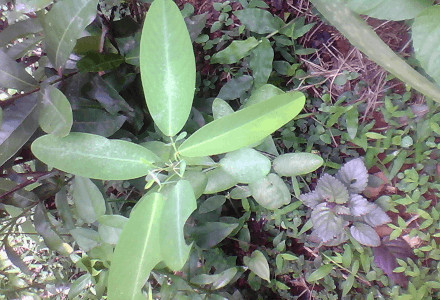
Photographer: Thozhukanni
CC License: https://bit.ly/1E6HPMf
Telegraph Plant Facts
- The term Telegraph Plant serves as the name given to a remarkable and impressive species. The unique plant also bears the cumbersome scientific name of Codariocalyx motorius. By any name, it remains an extremely fascinating type of flora.
- The Latin term motorius, which forms part of its hard to pronounce scientific name, also springs from a particular physical ability. That’s because it also represents one of the few known plants possessing a remarkable ability.
- That’s due to the fact that it’s capable of comparatively rapid movement. In yet another astounding gift from Nature, however, the leaves also move to follow the sun. It does this in order to maximize its use of the sun’s rays.
- Individual specimens also have the amazing ability to move comparatively quickly. Its ability to move with the sun has led to its being commonly used in gardening. It also holds a place of honor in science for another reason.
- That holds true due to the fact that Charles Darwin himself became the first person to describe the Telegraph Plant. This occurred in a scientific publication in 1880. Since it fortunately appears to have a stable population, the IUCN has no listing for it.
Related Articles
Jade Vine Hawaiian White Hibiscus Nevin’s Barberry
Photographer: Alex Lomas
CC License: https://bit.ly/3yHwvI3
Telegraph Plant Physical Description
Doubtless, the most memorable physical feature of the Telegraph Plant is its remarkable leaflets. In point of fact, its best known for the astonishing movement of this incredible foliage. In addition to their ability to move, these develop as small and laterally shaped.
These appear in large numbers. Plus, the ability of this flora to move follows certain patterns. During the day the foliage commonly moves rapidly enough to be seen with the eye. The closure time measures 3-5 minutes, and happens due to its desire to follow the sun.
The small flowers of the Telegraph Plant also develop numerous in number. These appear a bright purple in color. This plant also produces large quantities of compounds known as tryptamine alkaloids. These chemicals develop primarily in its leaves and roots.
- Kingdom: Plantae
- Phylum: Angiosperms
- Class: Eudicots
- Order: Fabales
- Family: Fabaceae
- Genus: Codariocalyx
- Species: C. motorius
Photographer: Thozhukanni
CC License: https://bit.ly/1E6HPMf
Telegraph Plant Distribution, Habitat, and Ecology
It perhaps comes as no great surprise that the incredible Telegraph Plant evolved as native to an area already renowned for its botanical diversity. That’s because this bewildering plant originates within the region of the world now known as tropical Asia.
In fact, the highly unique flora actually appears naturally across a comparatively wide swathe of the continent. Not only that, though, but the portions of the continent in which the marvel of Nature occurs naturally includes numerous countries.
Primarily, this includes the countries of Bangladesh, Cambodia, Bhutan, China, India, and Thailand. The impressive species also lives in one particular portion of the remote South Pacific. There, it appears naturally on the chain of islands named the Society Islands.
Given the region of the globe in which this remarkable plant evolved, the endemic habitat of the amazing Telegraph Plant comes as no surprise. That’s due to the fact that its native habitat consists primarily of rainforest, so common to this area.
However, even within that environment, it stands out. In point of fact, its requirements continue to be quite specific and demanding. That holds true because the impressive species develops most especially in regions with relatively loamy and sandy soil.
Species Sharing Its Range
Mandarin Duck Chinese Lantern Indian Bullfrog
Check out our other articles 7 Highly Unusual Lakes, Blanket Octopus, Prince Edward Island, Picasso Bug, Hoatzin, Eastern Diamondback Rattlesnake, Chinese Giant Salamander

